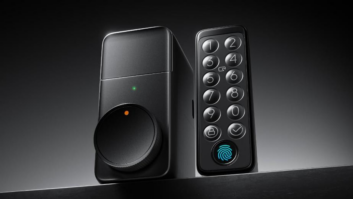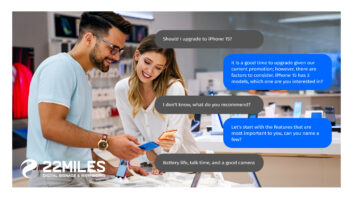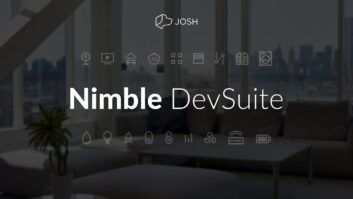LAS VEGAS TWICE sat down with a who’s who of retail executives during International CES in January to discuss a range of hot-button topics affecting dealers and the industry (see TWICE, Feb. 23, p. 16). Coverage of our annual Retail Roundtable continues with an examination of customer service and education, and the advent of direct sourcing in Asia.
TWICE: CE technology continues to evolve at an ever quickening pace, while lower prices are bringing it to an ever widening demographic. How are you making it understandable for a mass audience?
Larry Mondry, CompUSA: We’ve taken a stab at that lately with a program we are calling “Unmatched.” It’s really worked out very nicely for us.
One of the things all of us have to do if we want to be in business in the long run is to figure out what we are good at, and then make sure that the customer understands that that is what we stand for.
One of the things that we know we’re good at is service. Unlike a lot of folks, we’ve got service capabilities in all of our stores. We’ve got service capabilities out in the field. This year, we will probably do four million service events, half of them in people’s homes.
So we said, “How can we go and leverage that at a time when, frankly, we need to differentiate ourselves from some of our competitors?” There are areas where it’s not so much that they aren’t good, but where they’re not focused. Without getting into specifics, we do service for people in this room. We just don’t talk about it.
So we came up with Unmatched. We said, “If you want to buy pretty much any electronics-type product, we’ll install it for you and train you on how to use it for free.” It’s the marketing slogan. It’s “unmatched.” Nobody can match that because they don’t have the backbone capability to do so.
Today, if you want to go and buy not even so much a PC from us, but a digital camera, we come to your house or business. We go and set it up for you, so that it is working with your PC and whatever other items you have, and show you how to use the digital camera from the point of creating a picture to printing it on your printer.
Perhaps that printer is also a little older, and maybe you could use a different type of printer. There’s a cable that needs to go with that, and if you need one, we happen to have some in the truck. If you want, we can go on the Web and order it for you instead.
The customer response, not just from an absolute dollar perspective, has been awesome. It’s a fresh program, about three months old [in January]. It’s been our way, in those 90 days, to be able to get customers to look and to say that they’re more satisfied with their purchases. Return rates have gone down, and we tend to add on some sales in the customer’s home. Our vendors like it a lot. It’s really been a win-win in terms of the whole circle.
I also believe that [the program] can [differentiate us from our competition] in the marketplace, more so than we can in other categories. We just have to be good about letting people know about it. We will probably spend some time doing that this year.
TWICE: And if you don’t have the people internally, you go out and buy a Geek Squad.
Mike Linton, Best Buy: Exactly. We bought Geek Squad because we didn’t think we could actually build it internally. We love the brand name. Consumers are having a great time. It connects really well with Best Buy, and we’re all happy with the acquisition and what it is bringing to the company.
We’ve also put Geek Squads in the stores. They brought a whole other level of service into Best Buy’s smile.
Bill Parker, Gateway: When we decided that we were going to digital products, we engaged the services of an on-site education firm to look at the skills that would be necessary to sell all of these integrated solutions. The second thing was to assess the skills that our people had. Third, we went to examine the sales products, and last, we went to the sales process. We found that we had this complicated, seven-step sales process for the computer, and the customer would want a camera. Well, you didn’t need to go through the seven-step process on the camera sale, nor for the ink cartridge. We had to do an overall revamping, and it’s still an ongoing education process for our folks.
For me, the one measure of efficiency for our sales force is in our conversion. Our conversion is almost 40 percent over last year’s. This is because our people are now better educated and trained to convert the folks coming in. I don’t have the same power to generate the kind of traffic that the others in the room do because of their sales promotions — Best Buy cranked out 300 to 400 pages of circulars between Thanksgiving and Christmas, plus television. My competitive advantage has to be that highly motivated salesperson who is educated enough to take care of the customer from soup to nuts.
TWICE: When it comes to explaining stuff, is Amazon.com advantaged or disadvantaged by being Web-based?
Frank Sadowski, Amazon.com: I don’t know whether we’re advantaged or disadvantaged. We are in a very different position. We take the explanation of complex technology products very, very seriously, and we do a lot of work in that area. Our value-added position is to be an authoritative source of information. We have spent a lot of time making sure that the information we have on product detail pages is really complete and really accurate. We have over 100,000 pages with product detail[s] in the consumer electronics area alone, which is a lot.
When we started out in electronics years ago, we had a very large editorial team that did nothing but take products home, test them out, and write reviews. What we found out fairly quickly was that the customers really don’t care what Amazon.com thinks about the products. What they care very strongly about is what the manufacturer has to say about their product. So another value-added we have is that we want to get out of the way. We want to take ourselves out of the process and let the manufacturers talk directly to the customers. Unlike many, many retailers, we welcome manufactures coming in.
We would love for the manufactures to actually come in and input their product information directly onto our Web site, with certain checks and balances. That’s what customers tell us they want to hear. They don’t want to hear what I think about the latest XYZ camcorder. They want to hear what the manufacturer says about it. They also want to know what other customers like themselves think about that product. So not surprisingly, customer reviews are the most popular, most hit-upon item on the product detail page. More than anything else, customers want to know what other customers think about products.
That is kind of the great demystifier because if you have exact, complete information directly from the manufacturer — their marketing message, their product message — presented without interference, customers will trust that and find it authoritative. After all, Sony knows Sony better than Amazon.com or anyone else knows Sony.
Then they can go and do the real touchstone, which is to find out what other people like themselves think about that product. The customers will tell each other all kinds of hints and tips. It’s actually great for accessorizing, because customers will remind other customers to make sure they get the accessory. That’s pretty neat.
Neil Bobrick, Ultimate Electronics: That’s pretty interesting. We’ve been educating customers for years and years. We’ve been delivering big screens and audio systems and many other things to customers’ homes. We’ve provided them with that education, and we talk to our customers. They shop with us because of the knowledge our people have. It’s the fact that they can take something that is very complicated and turn it into something very simple. I think the onus is on us to make it simple.
I’ve often wondered, to your point, Frank, where the customer reviews are the most viewed information on the product, how many customers come to the store, and then go to the Web to verify what a Tweeter or Ultimate says, to see what customers really think? They may even then ultimately end up buying that product right there online and not go back into the store.













